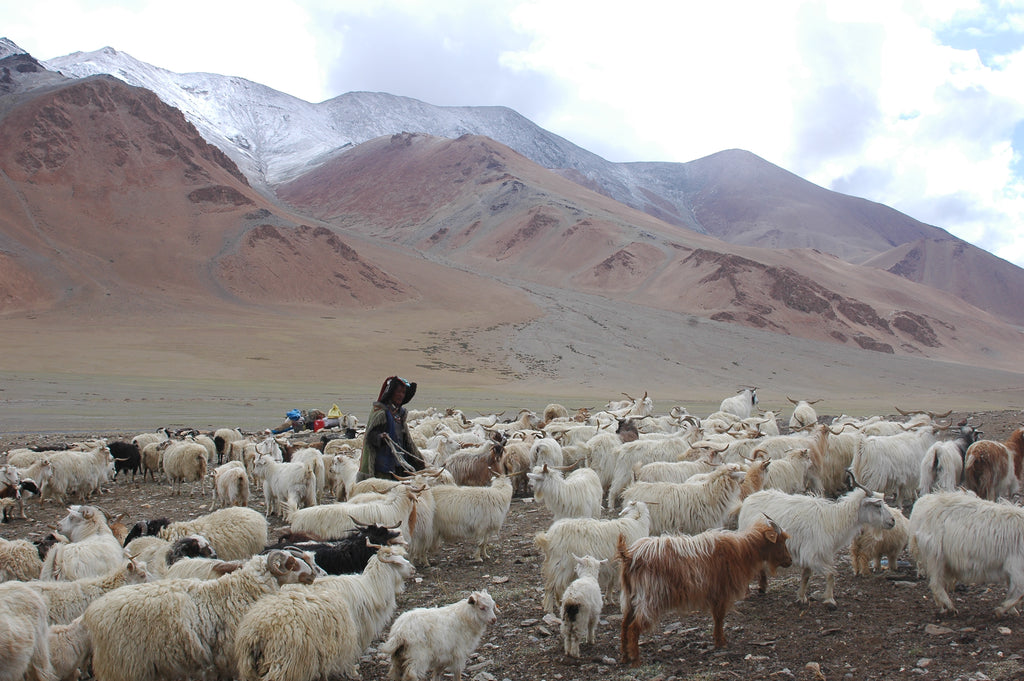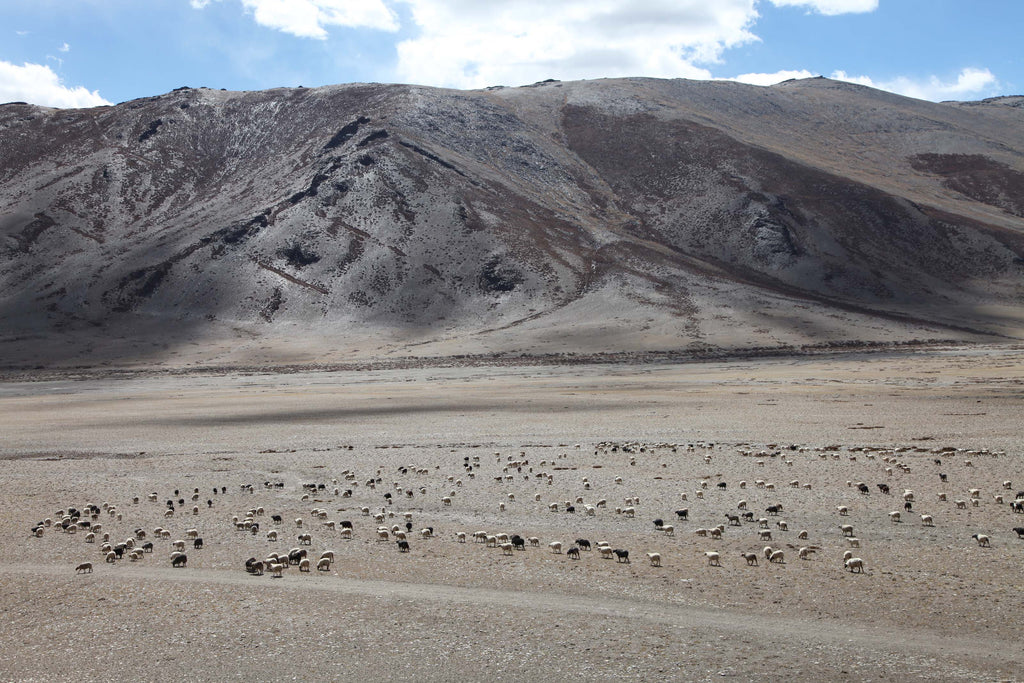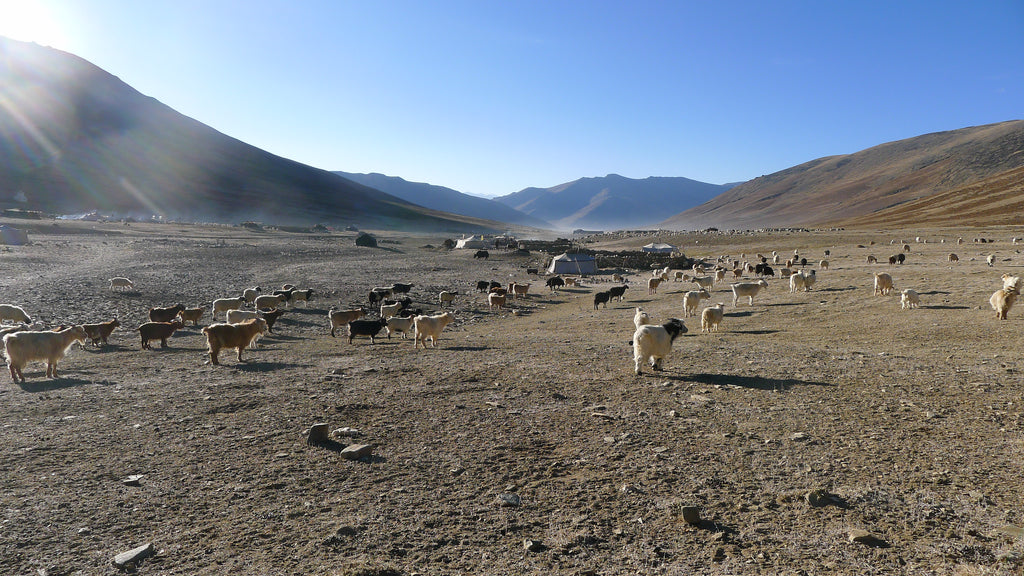Pashmina: Nomadic Livelihoods, Trade and Craftsmanship
It is sometimes hard to imagine that a goat foraging on the desert-like terrain of Changthang can lead to the creation of one of the most exquisite and finest of the world’s textiles – the Kashmir Shawl. In the words of a nineteenth century British administrator, this shawl “is the product of a felicitous conjunction between pashm, one of the finest animal fibres ever put to the loom and the amazing and unique skills of Kashmir’s spinners, weavers, designers, dyers, rafugars and a host of other workers”.

The story of the Kashmir Shawl continues in much the same manner today, but most accounts start the story in Srinagar, making no more than a passing reference to the fact that some of the finest raw material in the world comes from the high mountains of Ladakh. Though both regions are located in the North Indian state of Jammu & Kashmir, and linked through the trade and manufacture of pashmina, making the journey of the story from start to finish important. It takes one through some of the highest motorable passes in the world and some of the toughest living conditions.
THE PASHMINA GOAT
Situated in the high reaches of the Himalayan and Karakoram mountains, in Eastern Ladakh, are the wide-open plains of the Changthang (literally known as ‘northern plains’). At a height of over 12,000 feet these are some of the coldest regions of Ladakh, with an intense wind chill factor. It is here that the Changpa (pastoral nomads) reside, in black yak-hair tents, along with their herds of sheep and pashmina goats.
Pashm, lena as it is known in the Ladakhi language, comes from the fine winter undercoat or down of a particular variety of domestic goat, which is known as ‘Pashmina goat’ or Changra (literally “Northern goat”) and also shawl goat. The growth of pashmina is stimulated by the intense winter cold of windswept plateaus, situated at high altitudes, such as Changthang. Typically, pashm is combed out of the goats in the months of June and July, with a male goat yielding between 300 to 500 grams of fibre and a female 200 to 250 grams. Good quality pashmina is determined by a long staple length and small diameter, in fact fibre diameter is the single most important feature of pashm and the smaller the diameter the finer the fibre.
Pashmina Explained by Dr. Monisha Ahmed, Textile Anthropologist
Credits:Excerpt from Essay by Monisha Ahmed. Photography by Monisha Ahmed, Tsering Wangchuk Fargo and Video Film by Zeze Collective directed by Errol Rainey and Isaac Wall.
Monisha Ahmed is an independent researcher who has been visiting and writing about material culture in Ladakh since 1987. Her doctoral degree from Oxford University developed into the book Living fabric - Weaving among the Nomads of Ladakh Himalaya (Orchid Press, 2002), which received the Textile Society of America’s R L Shep award in 2003 for best book in the field of ethnic textile studies. She is the author of several articles on the material culture and textile arts of Ladakh, co-edited with Clare Harris Ladakh – Culture at the Crossroads (Marg Publications, 2005) and with Janet Rizvi authored Pashmina – The Kashmir Shawl and Beyond (Marg Publications, 2009). She is the co-founder and current Executive Director of the ngo LAMO (Ladakh Arts and Media Organisation) and is currently Associate Editor for Marg Publications, Mumbai.


